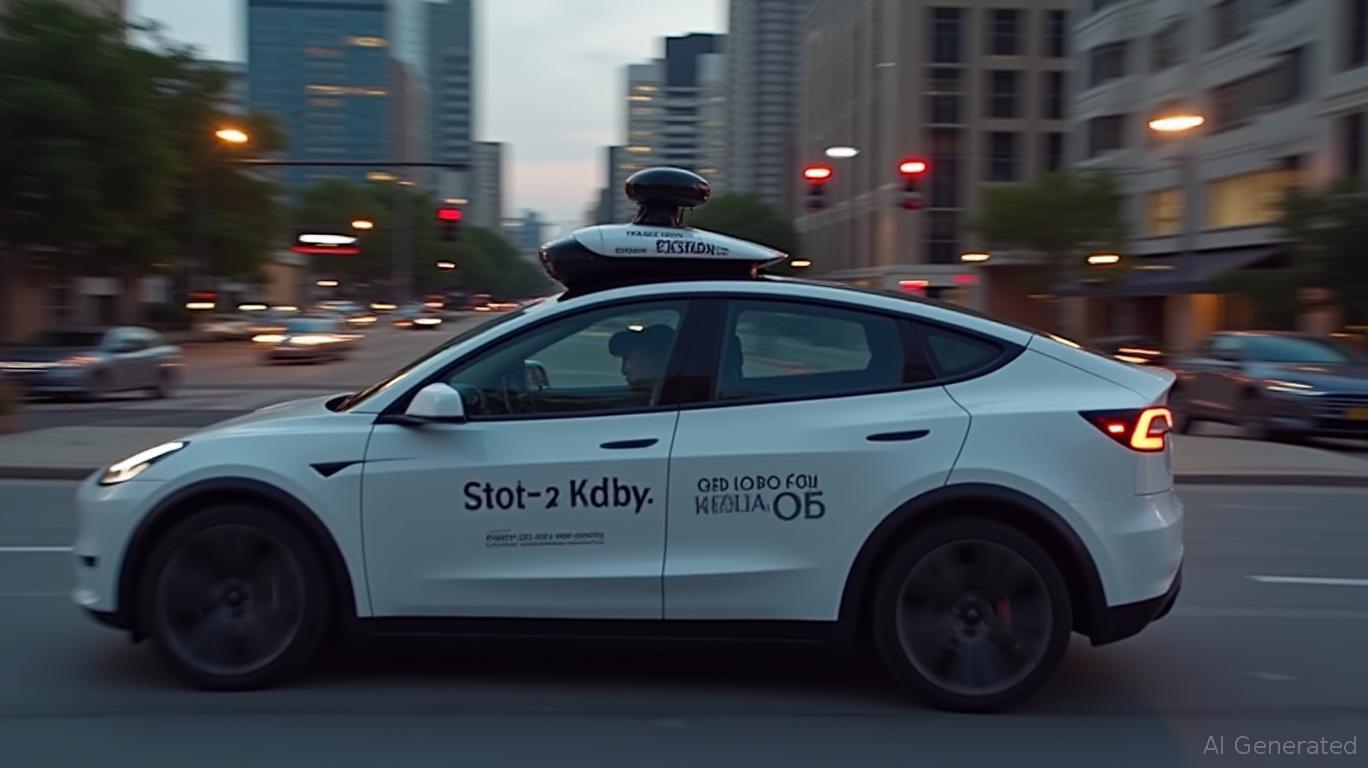Tesla's Autonomous Ambition: Navigating Regulatory Headwinds to Lead the Robotaxi Race
The autonomous mobility market is projected to reach $1.5 trillion by 2035, and Tesla's aggressive robotaxi rollout in Texas has positioned it at the forefront of this transformation. While competitors like Waymo and Zoox grapple with regulatory uncertainty and scalability bottlenecks, Tesla's vertical integration, real-world data trove, and early Texas foothold are creating a defensible lead. Let's dissect how
is turning regulatory and technical challenges into strategic advantages—and why investors should pay attention.
Regulatory Tailwinds in Texas: A Testing Ground for Innovation
Texas's regulatory shift in 2025—from laissez-faire to cautious oversight—has paradoxically become a tailwind for Tesla. Governor Greg Abbott's June 2025 law mandates permits for fully driverless vehicles starting September 1, but Tesla's June 22 trial in Austin sidesteps immediate legal friction by including a “safety monitor” in the passenger seat. This strategic timing allows Tesla to collect critical real-world data while competitors wait for permits. Meanwhile, Waymo and Zoox—both active in Texas—face parallel compliance hurdles but lack Tesla's scale and existing infrastructure.
The law's permit system, while a minor hurdle, also centralizes oversight in the TxDMV, avoiding the patchwork of local regulations that plague states like California. This unified framework reduces costs for all players but disproportionately benefits Tesla, which already operates a 5,000-acre Gigafactory in Austin and has over 1 million FSD-enabled vehicles on Texas roads.
Tesla's stock has surged 60% since 2023 on FSD optimism, even as skeptics question its vision-only approach. Investors are betting that Tesla's first-mover advantage in Texas—and its ability to leverage regulatory flexibility—will pay off long-term.
Tesla's Scalability Edge: Data as the New Oil
Tesla's software-driven model contrasts sharply with Waymo's sensor-heavy and Zoox's hardware-centric approaches. While Waymo's fleets rely on costly LiDAR systems (accounting for over 50% of hardware expenses), Tesla's FSD software leverages its existing fleet of 1.8 million vehicles worldwide, each generating terabytes of real-world driving data. This data fuels Tesla's neural network, enabling iterative improvements that competitors cannot match.
Zoox's bidirectional, purpose-built vehicles—designed for urban efficiency—face a scalability ceiling. Its Hayward factory, capable of 10,000 units annually, pales against Tesla's projected 3.5 million annual production capacity. Tesla's over-the-air updates also allow instant fleet-wide software upgrades, whereas Zoox must physically retool its custom vehicles for system improvements.
Technical Challenges vs. Long-Term Potential
Tesla's vision-only system has drawn criticism for its reliance on cameras in complex urban environments, where LiDAR excels. Yet Elon Musk's “super paranoid” approach—prioritizing redundancy in software over hardware—could pay dividends as FSD's neural network matures. The 10–20 Model Y robotaxis in Austin will serve as a live lab, refining Tesla's ability to navigate intersections, pedestrians, and adverse weather (a phased expansion is planned for 2026).
Waymo's sensor redundancy provides immediate safety gains but limits cost efficiency. Its partnership with Uber has proven successful, but its $2.5 billion annual R&D budget (vs. Tesla's $1 billion) highlights the financial burden of its approach. Zoox, meanwhile, is constrained by its niche design and Texas's preference for mass-producible vehicles.
Why Tesla Wins the Long Game
- Regulatory First Mover: Tesla's June trial in Texas gives it a 2.5-month head start on Waymo and Zoox, which must wait for permits. Early data collection could fast-track compliance and permit approvals.
- Data Moats: FSD's global dataset creates a self-reinforcing loop: more data = better performance = more users = more data. Waymo's closed fleet lacks this exponential advantage.
- Cost Leadership: Tesla's vision-only system reduces hardware costs by 40% compared to LiDAR-equipped rivals. This margin edge will be critical in a price-sensitive mobility market.
Risks and the Investment Case
Tesla's vision-only system faces skepticism from safety advocates, and Texas's September 1 permit requirement could delay expansion. However, the state's regulatory shift reflects a broader industry trend toward balanced oversight—punishing reckless players while rewarding those who demonstrate safety.
For investors, Tesla's stock is a leveraged play on autonomous mobility. At a current valuation of $700 billion, it trades at 45x 2025 EV/Sales estimates—a premium to Waymo's parent Alphabet (20x) but justified by its scalability. The $1.5T market is too large for niche players; only vertically integrated giants like Tesla can dominate.
Conclusion
Tesla's robotaxi rollout isn't just a tech experiment—it's a strategic land grab in Texas, where regulatory tailwinds and data-driven scalability are its secret weapons. While Waymo and Zoox refine incremental improvements, Tesla is building an autonomous mobility empire on the same principles that disrupted automotive: vertical integration, data dominance, and ruthless cost discipline. For investors, the risk is real, but the reward—a stake in the future of transportation—is worth the bet.
The $1.5T autonomous mobility market is Tesla's to lose. Will it capitalize? The next 12 months in Texas will tell.

Comments
No comments yet